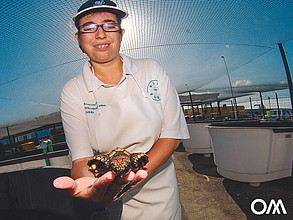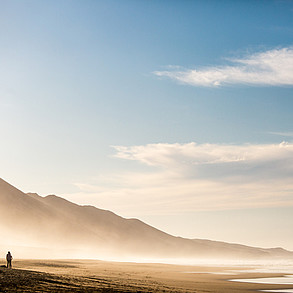There are many unique sights in Fuerteventura, including the rearing station for the loggerhead turtle or Caretta Caretta turtle.
Even if the island looks very barren at first glance, Fuerteventura also has an interesting flora and fauna. On the one hand, due to the desert landscape and the dry climate, there are many plants here that are only found on Fuerteventura. These endemic plants are perfectly adapted to the island's weather and it is interesting to learn how these specialists wrest their livelihoods from the island's plant kingdom.
There are also many unique inhabitants of the island in the animal kingdom. Not just the cute chipmunks or wild donkeys that often run to Morro Jable. It is above all the inhabitants of the sea and the beaches that make the island so interesting.
Of course there are dolphins in the waters around the island. But there are also more and more sea turtles.
Here on Fuerteventura there is a project that supports the reintroduction of the loggerhead sea turtle (Caretta Caretta).
Turtles always return to the beach where they hatched
The loggerhead sea turtle has long lived in the waters around Fuerteventura. However, it was hunted and almost exterminated by the colonialists, who populated the island more and more from the late 16th century.
The same conquerors of the island who use most of the island's vegetation to fire their lime kilns. Fuerteventura once had a steppe-like vegetation with small forests. Only in the course of the last centuries the island became more and more a desert.
For several years there has been a project of the University of Las Palmas which, together with the administration of the island, supports the resettlement of the hawksbill sea turtle.
The idea is simple and ingenious: turtles always return to the beach where they hatched to lay eggs. That is why the eggs of the Caretta Caretta are buried on the long beach of Cofete.
When the turtles hatch, they are collected and taken to the hatchery until they are strong enough to swim in the sea and survive on their own.
If the turtles were released into the sea immediately after hatching, too few of them would survive in the wild to bring a relevant number back to the beach later.
The sea turtle nursery is located in the port of Morro Jable
Nature is given a little help and the turtle children grow so long that they are too big for many of their natural predators.
The basins in which the small turtles grow are in the port of Morro Jable.
This turtle hatchery is open Monday to Friday from 10 a.m. to 1 p.m.
Many holidaymakers in Jandia and Morro Jable do not even know about this small fine sight that is practically only within walking distance.
In the different tanks there are turtles that are so small that they don't even cover the palm of your hand, to turtles that are so big that they need their own tank for themselves.
All turtles will populate the waters of the Canary Islands one day and it may well be that we surfers meet them again on special days in the line up, on a SUP tour or while snorkeling.
Conclusion
The turtle hatchery in the port of Morro Jable is one of the sights of the island that only a few know about, but which is actually a small highlight when visiting the island. The station is easy to reach on foot and is open Monday to Friday from 10 a.m. to 1 p.m. Here you can see sea turtles that are small that they don't even cover the palm of your hand, to turtles that are so big that they need their own pool.
All of these turtles will live in the waters around Fuerteventura one day.

